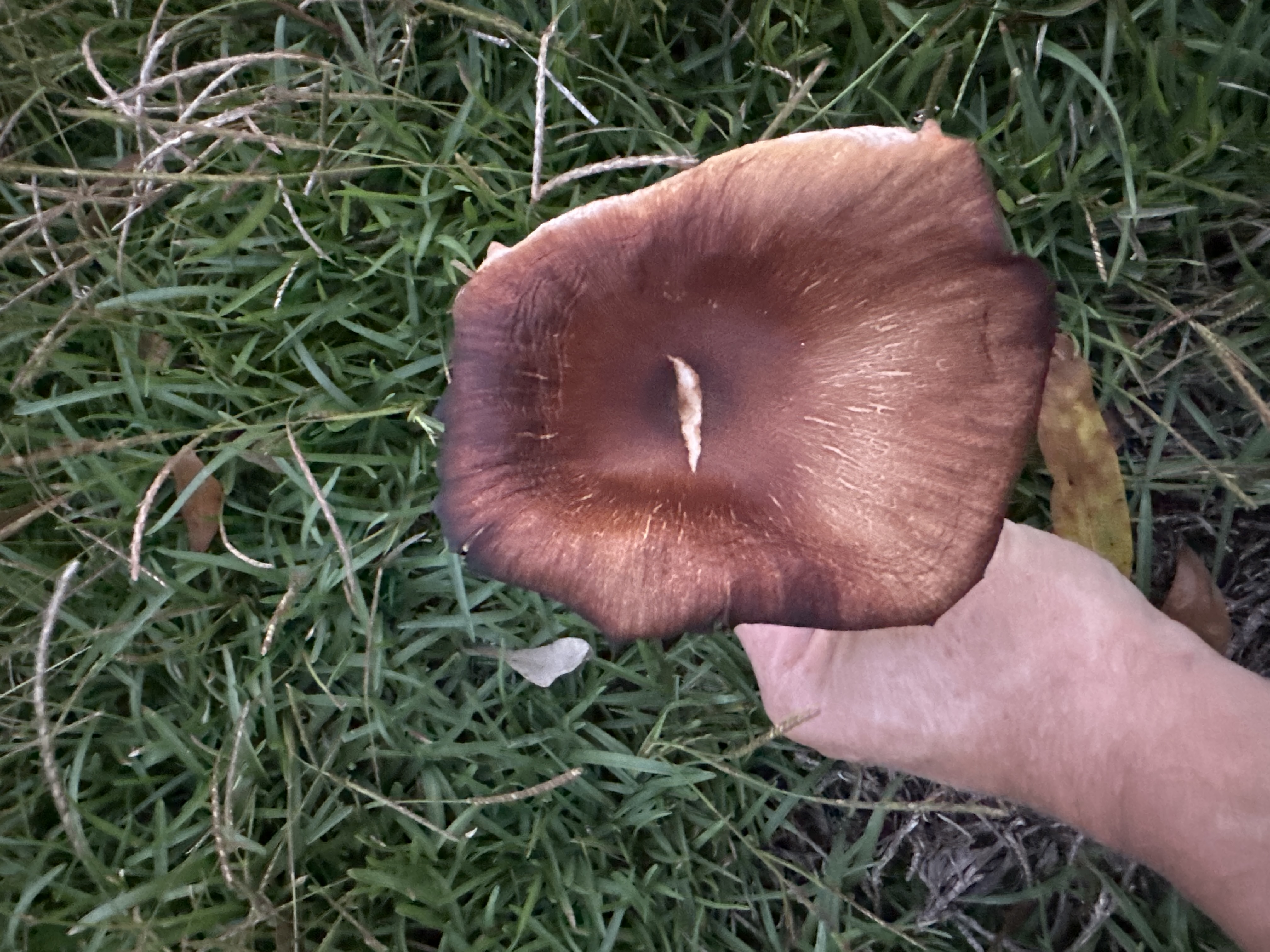Brown Rollrim
Paxillus involutus
Identification: Highly Toxic Brown Rollrim (Paxillus involutus)

1 / 4
Toutes les images (4)
Caractéristiques clés
- Cap dark reddish-brown
- depressed center
- often velvety or fibrillose.
- Gills deeply decurrent
- thick
- widely spaced
- rusty orange-brown.
- Gills often cross-veined (anastomosing) near the stem.
- Stem pale brown
- curved
- lacking a ring or volva.
- Grows terrestrially in grass or soil
- often near trees.
Couleur :
Dark reddish-brown cap; rusty orange-brown gills; pale brown stem.
Odeur :
No distinctive smell
Mode de croissance :
Clustered
Environnement :
Soil/Grass
Habitat et distribution
Habitat :
Lawn or grassy area, associated with trees (mycorrhizal).
Distribution :
Widespread across the Northern Hemisphere (North America, Europe, Asia).
Saisonnalité :
Summer to Autumn
Valeur économique
Demande du marché :
None - toxic
Gamme de prix :
N/A
Usage commercial :
None
Informations sur la toxicité
Symptômes :
- Severe gastrointestinal distress (vomiting, diarrhea).
- Abdominal pain.
- Rarely, potentially fatal autoimmune hemolytic anemia (Paxillus syndrome).
Délai d'apparition :
30 minutes to 3 hours (GI symptoms)
Premiers secours :
- Seek immediate emergency medical attention.
- Contact poison control immediately.
- Retain a sample of the mushroom for identification.
Contacts d'urgence :
- 911 (US)
- Poison Help (US): 1-800-222-1222
Espèces similaires
Velvet-footed Pax
Tapinella atrotomentosa
Différences clés :
- Stem is distinctly dark brown to black and velvety.
- Grows on wood, not soil.
Poison Pax
Paxillus rubicundulus
Différences clés :
- Typically smaller size.
- Cap often lighter, more yellowish-brown.
Action recommandée
Do not touch or consume. Ensure immediate disposal of all specimens. Wash hands thoroughly after handling.